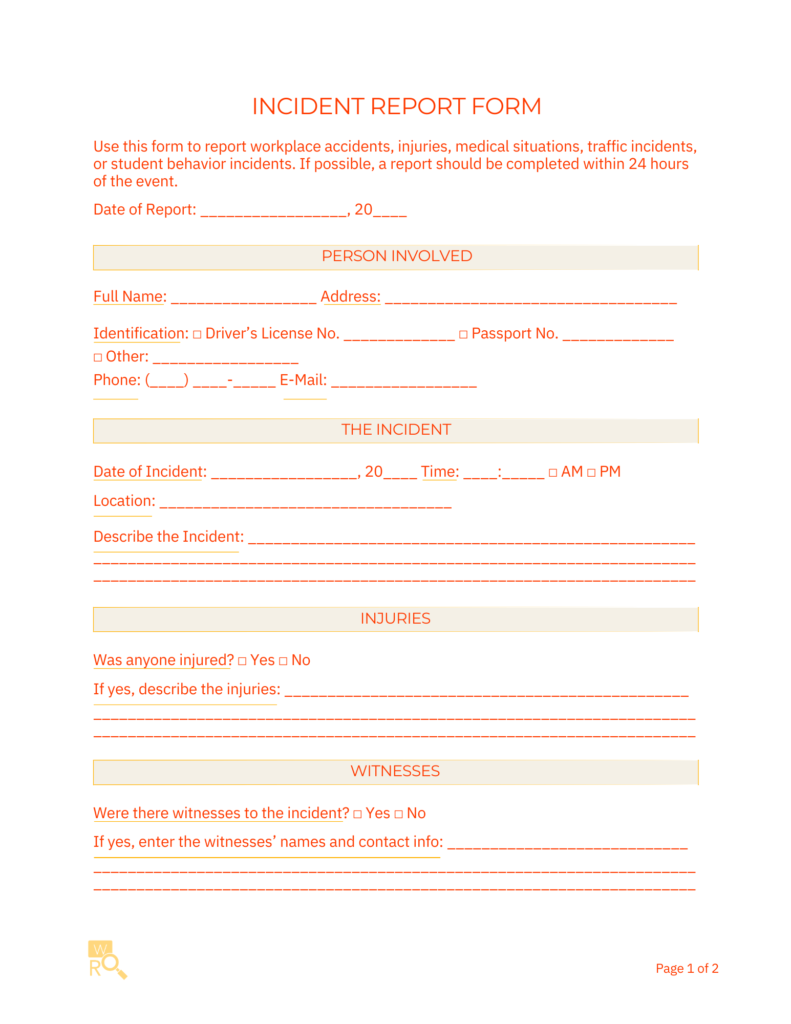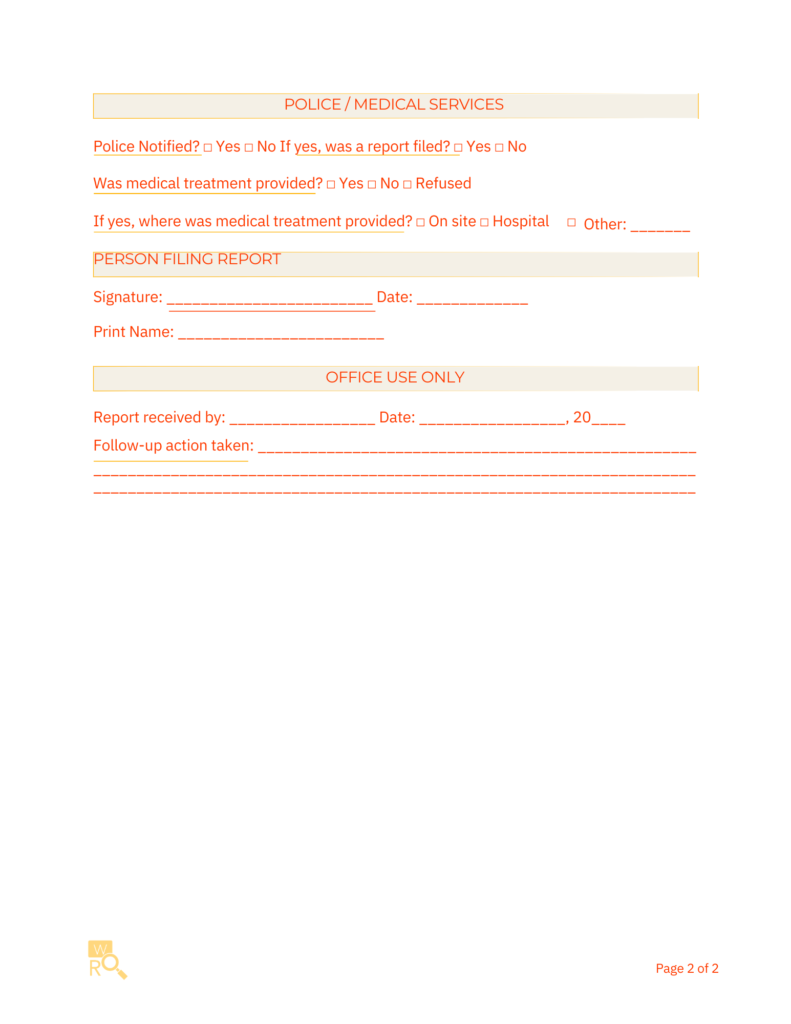Free Sample Work Incident Report↓
As Bob can certainly attest, reporting incidents is no fun. Just last week while rushing to finish a big project, he accidentally bumped into Linda, causing her to spill hot coffee all down the front of her brand-new white blouse. Bob hadn’t been watching where he was walking in his haste to get the job done. Thankfully, no serious harm was done. But it could have been much worse if the coffee had been even hotter.
Accident and incident reports may seem like a pain to fill out, but they serve an important purpose. Not only do they help document what happened in case issues arise down the road, but reviewing past reports is key to preventing future mishaps. Today we’ll take a look at a sample work incident report and break down each section to understand its purpose.
Table of Contents
What is a Work Incident Report?
A work incident report is a form or document that is used to formally report and document any accidents, injuries, property damage or near misses that occur in the workplace.
Reports are not meant to assign blame but rather to understand what happened and how future risks can be mitigated through changes. They allow management to track trends, and compliance issues and determine if policies/training need updates to enhance workplace safety.


What to Include in a Work Incident Report?
Each company will require a specific work incident report, but here’s a general outline that appears in almost all incident documents.
- Date and time of the incident
- The exact location where the incident occurred
- Name, job title and contact information of the employee(s) involved
- Description of the events – an objective factual account of what happened
- Name(s) of any witnesses
- Nature of injuries sustained or potential hazards
- Immediate action taken – first aid, medical treatment, repairs, etc.
- Underlying factors – unsafe conditions, unsafe acts, equipment failure, etc.
- Root cause analysis – what were the true underlying reasons for the incident
- Corrective actions taken – changes to remedy issues and prevent recurrence
- Recommendations – additional actions or training suggested
- Photos/diagrams of the location and any injuries (if applicable)
- Statement from employee(s) involved
- Statement from witnesses
- Signature and date submitted by the employee(s) filing the report
Sample Work Incident Report
| Company Name: | ABC Industries |
| Date of Incident: | 1/3/2023 |
| Time of Incident: | 10:45am |
| Employee(s) Involved: | John Doe Job Title: Machine Operator |
| Location of Incident: | Production Floor, Machining Station 3 |
| Description of what happened: | I was operating the lathe machine to turn metal rods when the chuck came loose, causing a 6-inch metal rod to fly out at high speed. It grazed my left forearm, tearing my shirt and breaking the skin. |
| Witnesses: | None witnessed the exact incident but Tom Smith saw me right after in the break room icing my arm. |
| Nature of Injuries: | 1-inch laceration on left forearm requiring first aid but no lost time. |
| Immediate Actions Taken: | I applied pressure with a cloth and reported to onsite medical to be cleaned and bandaged. |
| Root Cause Analysis: | The chuck locking mechanism had worn down over time and was not held securely. |
| Corrective Actions Taken: | The lathe was taken out of service for maintenance to replace the worn chuck. |
| Recommendations: | Inspect all machine chucks bi-weekly and replace any showing signs of wear. Consider adding chuck locks or shields as additional safety measures. |
| Statement: | The above description provided is true and accurate to the best of my knowledge. |
| Signature: | John Doe |
| Date: | 5/3/2023 |
Tips to Write a Good Work Incident Report
Be objective and factual – Stick to just the facts of what happened without opinions or speculation.
Provide context – Include relevant details like location, machinery/tools being used, or tasks being performed.
Document injuries/damages thoroughly – Be specific about the type, severity, treatment of wounds, damage to equipment, and such.
Attach relevant evidence – Photos, sketches, and machine readouts can enhance the written report.
Being diligent and following tips like these will produce useful, credible reports to draw insights from past incidents.


